What's New
Displaying results 3591 - 3600 of 4914
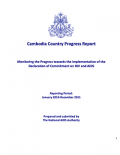
Resource | Publications,
The compilation of this report has involved contribution from a board spectrum of government ministries and secretariats, from different national and sub-national levels, in partnership with NGOs and CSOs, who work as part of the national response to HIV and AIDS in Cambodia.

Resource | Publications,
The preparation of Mongolia’s 2012 country progress report has been led by the National Committee on HIV and AIDS. The development of the report involved the key stakeholders including government institutions, civil society organizations, multilateral and bilateral partners.
Countries were asked to report on 30 indicators of seven main strategies. Six indicators were not applicable to the HIV epidemic and response in Mongolia, meaning that there is no requirement to report these indicators.

Resource | Publications,
The Republic of Korea (ROK) has an area of 99 k m 2 with a population o f 49 million (as of 2011). The number of medical facilities is 81,681 in 2010 and the number of medical manpower is 870 persons per 100,000 populations.
For HIV/AIDS, the first HIV in fected cases detected and reported in 1985 and then the number of reported HIV infection s steadily increased afterward to date. To cope wi th this newly emerging disease burden, the ROK established the advisory committee on HIV/AIDS Prevention Programs and enacted Korea HIV/AIDS Prevention Act in 1987.
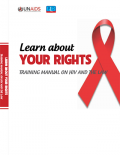
Resource | Tools,
This manual is intended to be used primarily to train about the rights of people living with HIV (PLHIV), people affected by HIV and key affected populations as well as about the remedies available to protect those rights in Viet Nam.
The purpose of the training manual on HIV and the Law is to provide guidance on how to raise awareness of the rights of PLHIV, people affected by HIV and key affected populations, and how to share information with the legal and PLHIV communities about how to seek justice when those rights are violated.

Resource | Publications,
Since 2004, Sisters has provided health, education, and support services to the TG community in Pattaya, a two-hour drive from Bangkok in Chonburi Province. Its goal is to offer a safe and welcoming place for TG people to seek friendship and support, and to encourage the practice of preventive behaviors such as regular HIV testing and counseling (HTC) as well as screening for other sexually transmitted infections (STIs).
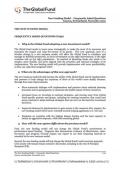
Resource | Guidelines,
The Global Fund needs to invest more strategically, to make the most of its resources and maximize the impact and value-for-money of its grants. This new approach, part of a broader change to a new business model, will allow the Global Fund to rebalance and manage its portfolio proactively, to focus investments on the right interventions, in the right countries and on the right populations.

Resource | Publications,
The Global Price Reporting Mechanism (GPRM) contains information on transaction prices, sources and quantities of antiretroviral medicines (ARVs), tuberculosis and malaria drugs and HIV/AIDS, tuberculosis and malaria diagnostics purchased by HIV/AIDS, tuberculosis and malaria programmes in low-income countries1, lower middle-income countries2 and upper middle-income countries. Countries have been classified according to the World Bank Atlas calculation method.
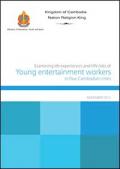
Resource | Publications,
Despite Cambodia’s significant strides in reducing HIV prevalence in recent years, pockets of new infections remain high among certain sub-populations, particularly among entertainment workers. Notably, many entertainment workers are young and at double risk of HIV infection and at risk of exploitation, violence and abuse.
This important qualitative study was conducted in four urban cities as a follow up to the 2010 Survey among Most at Risk Young People to provide insights into the life experiences and risks young women, men and transgendered persons are exposed to. While this is not a nationally representative study, it provides informative data and rich insides into young people’s experiences.
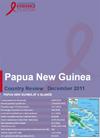
Resource | Fact Sheets,
The first case of HIV in Papua New Guinea (PNG) was reported in 1987. By 2004, the country had declared a generalized epidemic, the fourth country in the Asia Pacific region to do so. Although the HIV epidemic in Papua New Guinea is now the largest and the only generalized one in the Pacific, recent analysis shows that the epidemic is starting to level off.

Resource | Publications,
Urgent action is needed to control the expanding HIV epidemic in the Philippines. After many years of stable, low-level transmission, the number of cases detected has risen an average of 62% in each of the past five years; compounded, this is almost a 10-fold increase in the number of cases detected each year. It is clear which population is being affected: in the first half of 2012, 96% of newly identified cases were males, and 87% of all newly identified cases were males who have sex with males (MSM). As a result, the HIV prevalence in MSM is now ranging from 2-5% and climbing.





